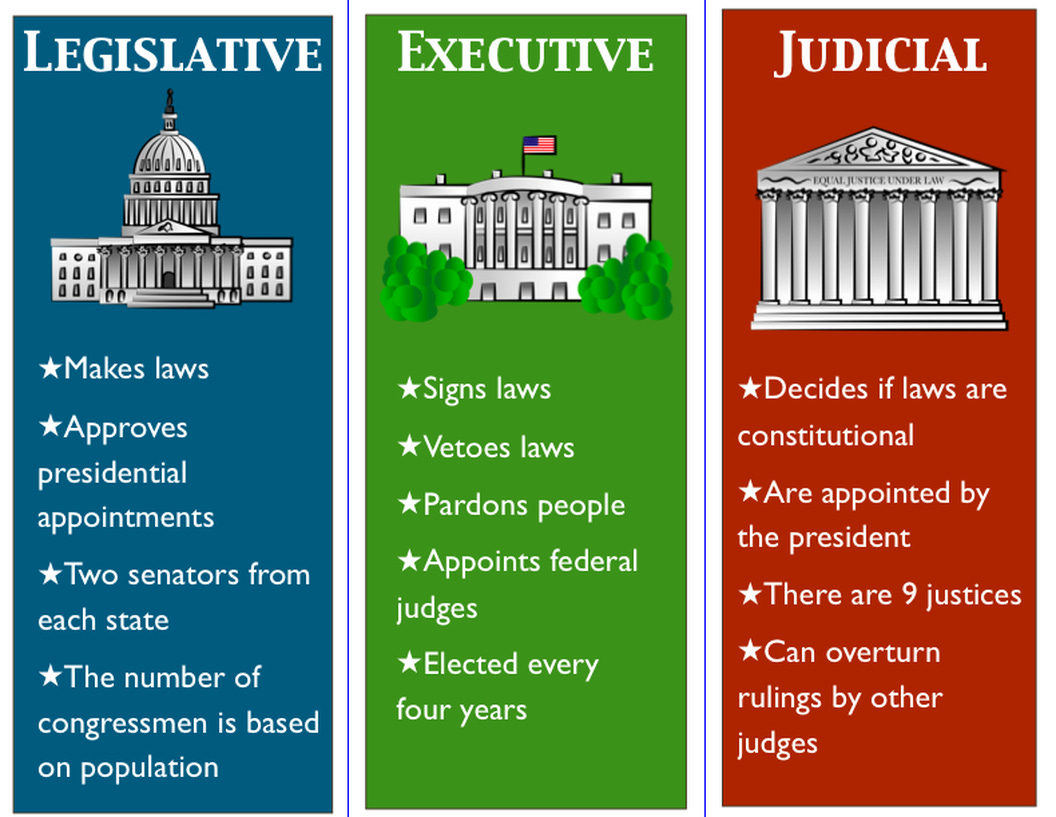This is Part 2 of what is turning into a multi-part series. If you haven’t read Part 1, or need a refresher, you can find it here!
I just returned from a trip to Florida to see my nuclear family and niece and nephews. I’m one of 4 kids and we live all over the place so it’s hard to get all of us together at the same. One of my brothers is an expat in Vietnam, so we haven’t seen him since 2019. He used to come home every two years, but COVID disrupted that plan. My mom is sick, so it was a particularly profound week, having us all together.
Now it’s time to get back at it.
But first …
She Looks Like Barbie
I can’t help but find it ironic that a few days ago, July 31, 2023, a couple of NFL radio hosts from BIG 100, a Washington, DC station and official station of the Washington Commanders (formerly Redskins), were fired from iHeartMedia for making “sexually disparaging” comments toward sports reporter Sharla McBride.
Per some online outlets, Don Geronimo reportedly said “Hey look, Barbie’s here. Hi Barbie girl …. I’m guessing she’s a cheerleader.”



Considering that the Barbie movie is taking the box office by storm, and that it portrays Barbie as an “independent woman” who doesn’t need Ken after all, I’d think calling someone Barbie these days would be a compliment. After all, we’ve now elevated Barbie in Barbie Land to the archetypal feminist hero of 2023 since she ditched the patriarchy, right?!
It was a joke people.
But not a very funny one it seems, and was obviously poorly timed. It was reported that Ms. McBride stated it was “inappropriate, unprofessional and embarrassing.” And for that, she should have (and I believe now has) received an apology.
But, it didn’t stop there.
Based on Ms. McBride’s feelings about being called Barbie - and at the very cultural moment when Barbie is being hailed as the standard bearer for feminine power - two people lose their jobs, and their livelihoods, for failing to align their conduct with iHeartMedia’s “core values.” IHeartMedia is the media partner for BIG 100.
Let that sink in for a moment.
What was characterized as a personal insult has risen to the level of a terminable offense, and all in a culture where ethical codes of conducts are being spit on as “white supremacist oppressive rules” from a bygone era.
—
Let’s go down a short rabbit trail …
While all of was “sinking in” for me, I looked up iHeartMedia’s “core values,” which are carefully curated on page 5 in their 2022 ESG Annual Report. They’re pretty boilerplate with all of the … blah blah blah … sustainability, equity … blah blah blah … we love everyone perfectly … blah blah blah …
But I was still curious …
Which of these core values did these broadcasters infringe?
And how much “values infringement” is required to justify termination for cause?
And, who decides how much “values infringement” constitutes behavior so bad an employee should lose their job?
Surely, there is an independent standard by which iHeartMedia measures infringement of its values, right? Hmmmm …
More than that though, take note that the “core values” are in their ESG report. That’s the important part.
If you don’t know, ESG stands for Environmental Social Governance. ESG is a social scoring system created by the United Nations to inform investors worldwide of a company’s risk profile vis-a-vis compliance with the UN’s Agenda 30, which sets forth the 17 Sustainable Development Goals that the ESG scores measure. These have nothing to do with profitability.
ESG scores are now as important, if not more important, than the normal “bottom line” analysis a potential investor would undertake. At the end of the day, if the company doesn’t turn a profit, it’s not sustainable as a business organization.
Under this new ESG regime, making money, absent sufficient social engagement on the UN’s terms - and the UN’s terms only, is part of a shareholder capitalist “system of oppression” that can no longer be tolerated.
Shareholder capitalism is out; stakeholder capitalism must come in.
Stakeholder capitalism is the idea that companies have responsibilities beyond those owed to their shareholders (those who have invested in the company by purchasing shares).
Social Equity
The social goals of ESG are established by the United Nations and fall broadly into three categories:
Environment (climate, sustainability)
Social (diversity, equity, and inclusion; human rights -as defined by the UN, not the Declaration of Independence; animal welfare; consumer rights)
Governance (how corporations are run and how that structure impacts stakeholders - note I said stakeholders, not just shareholders, to whom the leadership has a fiduciary duty).
By focusing on these issues which are beyond the economic health of an organization, the American economy is being transformed into a system of stakeholder capitalism v. shareholder capitalism.
In stakeholder capitalism, companies must provide a return for their shareholders AND satisfy their stakeholders (anyone affected by the company’s existence) by taking a stand on issues that create social equity. What creates social equity is not defined by the company, but by the United Nations, an entity that has zero authority over the United States or any company organized according to its laws.
Anyone who owns stock (or shares) in any company should care a lot about this!
Back to iHeartMedia …
Here is what they say about their ESG report:
The purpose of our ESG report is to increase transparency around our ESG efforts, including diversity, equity and inclusion; understanding our impact on society and the environment; and identifying where we still have room to grow.
Let’s tie this back to the Barbie issue …
My initial thoughts when I read about this issue were:
What is the specific harm to Ms. McBride?
What is the direct cause of the harm?
What are the injuries as a result of the harm?
Are there mitigating measures that can be taken to ameliorate any injury resulting from the harm, shy of termination of employment?
We won’t be getting any answers to these questions, of course, but not for the reasons you might suspect.
Ms. McBride’s feelings are irrelevant to iHeartMedia. They couldn’t care less about her. But what they do care about is their ESG rating.
If they “lose points” in the social category by failing to pursue gender equality (Sustainable Development Goal #5 of 17) in not just this instance, but in each and every other instance (regardless of whether the behavior constituted sexual harassment of some sort), then their ESG score will drop and their ability to access specific capital and high value talent will tank.
It’s all a ruse …
Although most won’t acknowledge it, everyone knows that neither law, nor rules, nor policies, nor “core values” of a company can alter human behavior in and of themselves. What they can do, however, is manipulate people into engaging in, or refraining from, certain behaviors on pain of punishment.
So, iHeartMedia, you’re just another flunky in the hands of the UN and you know it. Stop pretending to care about Ms. McBride, or anyone else for that matter, you’re just as greedy and self-centered as the rest of them. #stoptheruse
Beyond Barbie … Let’s Talk Sexual Harassment
The term “sexual harassment” was coined in May 1975 at Cornell University.
Nearly 50 years later, it is now considered a form of sex discrimination that violates Title VII of the Civil Rights Act of 1964.
Specifically, for purposes of the law, sexual harassment is a form of sex discrimination in the workplace. And, sex discrimination in the workplace is legally actionable conduct, i.e. illegal conduct. Which means, that sexual harassment is now legally actionable conduct.
Actionable in the law simply means something for which legal action may be taken in pursuit of some form of legal recourse. Employers with 15 or more employees can be sued by employees for sexual harassment and, if held liable, may be required to compensate the employee/s who brought the claim.
Note also that sex discrimination is a tort, as opposed to a crime.
Criminal law exists to punish those who commit crimes in order to protect all of the society, not just the victim. It is administered by the state: i.e. a state government or the federal government charges someone with committing a crime and then, through a jury trial, the government prosecutes the individual in an effort to secure a guilty verdict.
Tort law, however, provides a legal path to compensate victims of wrongful acts and is always resolved between private parties. The government doesn’t get involved and is not a party to the lawsuit, i.e. the plaintiff or defendant. Tort law is civil law. When we speak of civil litigation, we’re referring to tort cases, not criminal cases.
The Civil Rights Act of 1964
Before we continue, let’s look at the breakdown of the various Titles, or “Sections,” of The Civil Rights Act of 1964, so we have some sense of where the sex discrimination issue is codified in the law.
Sex discrimination is addressed in Title VII: Equal Employment Opportunity.
TITLE I: VOTING RIGHTS
TITLE II: INJUNCTIVE RELIEF AGAINST DISCRIMINATION IN PLACES OF PUBLIC ACCOMMODATION
TITLE III: DESEGREGATION OF PUBLIC FACILITIES
TITLE IV: DESEGREGATION OF PUBLIC EDUCATION
TITLE V: COMMISSION ON CIVIL RIGHTS
TITLE VI: NONDISCRIMINATION IN FEDERALLY ASSISTED PROGRAMS
TITLE VII: EQUAL EMPLOYMENT OPPORTUNITY
TITLE VIII: REGISTRATION AND VOTING STATISTICS
TITLE IX: INTERVENTION AND PROCEDURE AFTER REMOVAL IN CIVIL RIGHTS CASES
TITLE X: ESTABLISHMENT OF COMMUNITY RELATIONS SERVICE
TITTLE XI: MISCELLANEOUS
Title VII of the Civil Rights Act not only specifies that sex discrimination is illegal, but is also created the Commission on Equal Employment Opportunity, the federal agency charged with administering and enforcing civil rights laws against workplace discrimination through regulations. Note that federal agencies are part of the executive branch of government.
Because Title VII is federal law, it is implemented and enforced at the federal level. It also preempts any state laws covering the same subject matter. May other labor laws - unrelated to sex discrimination - are managed and enforced at the state level.
But, why a federal agency? And how does it all work?
May I introduce you to the federal regulation … ?
Federal Laws v. Federal Regulations
We often hear about the massive size of our government and the bloated bureaucracy that is the “administrative state,” but most of us don’t know what that REALLY means. The following should shed some light.
Congress (legislative branch) writes and passes laws, initially called bills. As soon as the President signs a bill, it becomes a law and an official part of the United States (Legal) Code.
Congress has done its part and moves on.
The Executive Branch, which includes the President, Vice President, Cabinet, and independent federal agencies (Department of Defense, Securities and Exchange Commission, Department of Health and Human Services, the United States Military, and so on) has the prerogative to implement and enforce the laws written by Congress. And they do this by enacting federal regulations. The regulations outline the steps for implementing laws in real life. In fact, there is an entire Code of Federal Regulations, which is separate and distinct from the United States Code (the compilation of federal laws).
This is all well and good when the President is staying within the bounds of presidential power established in Article II of the Constitution and ensures that regulations are faithful to the laws they are designed to implement.
However, when regulations step outside the scope of the laws they are authorized to enforce, they are engaging in un-Constitutional rulemaking.
To be crystal clear, the Executive Branch does not have the Constitutional power to make binding rules beyond laws enacted by a duly elected legislature. So, when it does go beyond its Constitutional authority, it creates a de facto administrative state. This means that unelected and unaccountable officials, aka bureaucrats, are both enforcing and making laws.
The nature and scope of the “administrative state” has been a subject of massive debate since the early 20th century.
The Judiciary, of course, interprets the laws in accordance with the U.S. Constitution.
The Administrative State and the Chevron Doctrine
In 1984, the United States Supreme Court ruled in Chevron U.S.A., Inc. v. Natural Resources Defense Council, Inc., 468 U.S. 837 (1984) that courts should defer to how a federal agency interprets an “ambiguous” statute, provided the interpretation is “reasonable,” irrespective of their own independent interpretation.
Requiring courts to defer to federal agencies, instead of themselves (courts, of course, have the ultimate interpretive authority to say what the law is), has come to be known as the “Chevron doctrine” after the case of the same name.
On May 1, 2023, SCOTUS agreed to hear a challenge to the Chevron doctrine in its next term, which opens in October. The case is Loper Bright Enterprises v. Gina Raimondo if you’d like to read the background and briefs.
The Chevron doctrine is a key driver in the imbalance of power between the three co-equal branches of government, in particular, the Executive Branch and the Courts.
If the Chevron doctrine is overturned, it will likely reset the relationship between the three branches in an important way. But, many will fight “to the political death” to avoid this. It will be intense and ugly, but won’t get much air time since (1) it’s not sexy, and (2) many media talking heads don’t understand anything about regulatory law.
But, shhh, don’t tell them I said that … :-)
So, what exactly does all of this have to do with sexual harassment?
A lot …
You see, the term “sexual harassment” doesn’t actually appear in Title VII of the Civil Rights Act of 1964. Only the terms “sex-based discrimination” and discrimination “on the basis of sex” are actually defined.
The term sexual harassment was first defined in 1980 by the U.S. Equal Employment Opportunity Commission (EEOC), the federal agency responsible for implementing Title VII of the Civil Rights Act.
Let’s take a look.
Sex discrimination, as defined in the Act (as amended), involves treating someone (an applicant or employee in a place of employment) unfavorably because of that person's sex, including the person's sexual orientation, gender identity, or pregnancy.
Here’s the actual language from the Definitions section of the law, or statute, as it reads now after amendments:
… The terms "because of sex" or "on the basis of sex" include, but are not limited to, because of or on the basis of pregnancy, childbirth, or related medical conditions; and women affected by pregnancy, childbirth, or related medical conditions shall be treated the same for all employment-related purposes, including receipt of benefits under fringe benefit programs, as other persons not so affected but similar in their ability or inability to work, and nothing in section 2000e-2(h) of this title [section 703(h)] shall be interpreted to permit otherwise.
This subsection shall not require an employer to pay for health insurance benefits for abortion, except where the life of the mother would be endangered if the fetus were carried to term, or except where medical complications have arisen from an abortion: Provided, that nothing herein shall preclude an employer from providing abortion benefits or otherwise affect bargaining agreements in regard to abortion.
Building on that definition, the EEOC has explained that one form of sex-based discrimination is Sex Discrimination Harassment, aka Sexual Harassment, which the agency explains as follows:
It is unlawful to harass a person (an applicant or employee) because of that person's sex. Harassment can include "sexual harassment" or unwelcome sexual advances, requests for sexual favors, and other verbal or physical harassment of a sexual nature.
Harassment does not have to be of a sexual nature, however, and can include offensive remarks about a person's sex. For example, it is illegal to harass a woman by making offensive comments about women in general.
Both victim and the harasser can be either a woman or a man, and the victim and harasser can be the same sex.
Although the law doesn't prohibit simple teasing, offhand comments, or isolated incidents that are not very serious, harassment is illegal when it is so frequent or severe that it creates a hostile or offensive work environment or when it results in an adverse employment decision (such as the victim being fired or demoted).
The harasser can be the victim's supervisor, a supervisor in another area, a co-worker, or someone who is not an employee of the employer, such as a client or customer.
The EEOC also publishes a fact sheet about Sexual Harassment Discrimination. Here are a few key points from the sheet:
Unwelcome sexual advances, requests for sexual favors, and other verbal or physical conduct of a sexual nature constitute sexual harassment when this conduct explicitly or implicitly affects an individual's employment, unreasonably interferes with an individual's work performance, or creates an intimidating, hostile, or offensive work environment.
Some circumstances where sexual harassment can happen are as follows:
The victim as well as the harasser may be a woman or a man. The victim does not have to be of the opposite sex.
The harasser can be the victim's supervisor, an agent of the employer, a supervisor in another area, a co-worker, or a non-employee.
The victim does not have to be the person harassed but could be anyone affected by the offensive conduct.
Unlawful sexual harassment may occur without economic injury to or discharge of the victim.
The harasser's conduct must be unwelcome.
To be clear, the EEOC, not Congress, defines the nature and scope of sexual harassment discrimination.
Naturally, SCOTUS Weighed In …
In 1986, the United States Supreme Court held in Meritor v. Vinson that sexual harassment that creates a hostile work environment qualifies as sex discrimination under Title VII, even though there was no economic loss to the victim, i.e. conditioning of concrete employment benefits on sexual favors.
Prior to this case, sex discrimination was only actionable if it resulted in an actual economic loss to the victim. If sex discrimination did not result in an economic loss for victim of the harassment, then the matter would have to be resolved outside of the legal system.
In 1978, Mechelle Vinson, a former bank teller (a black woman), filed a sexual harassment lawsuit against both her boss (Sidney Taylor, a black man) and the bank that employed both of them (Meritor Savings Bank).
Vinson accused Taylor of coercing her to have sex with him and for demanding sexual favors at work, thereby creating a hostile working environment. At trial, Vinson testified that, over a 3 year period, she had sexual intercourse with Taylor approximately 40 to 50 times, some of which were due to forcible rape inside the bank vault.

After 8 years moving through the various levels of the courts, SCOTUS heard Vinson’s case in 1986. In a unanimous ruling authored by then Chief Justice Rehnquist, the Court ruled that the type of behavior to which Vinson was subjected was tantamount to the creation of a hostile work environment, which, per the EEOC, is a type of sexual harassment, which in turn is a type of sex discrimination.
Whether or not the employer, in this case Meritor Bank, could be held liable for the conduct of their employee for non-economic harassment was not resolved in the court’s opinion.
But, given that SCOTUS resolved the key legal issue - whether Vinson could sue for hostile working environment discrimination, the case was remanded (or sent back) to the trial court (that’s the lowest level of federal court) for a rehearing based on the Supreme Court’s ruling.
Feminist activist Catharine McKinnon (introduced in Part 1 of this series) was on Vinson’s legal team.

Meritor v. Vinson is extremely important for several reasons, including the following:
1 - SCOTUS deferred to the EEOC’s definition of sexual harassment.
The Court adopted the EEOC’s definition of sexual harassment for purposes of its analysis. As such, it deemed the EEOC’s interpretation of sex discrimination a proper “administrative” interpretation of Title VII by the enforcing agency and therefore proceeded on that basis.
The Court noted that "while [the EEOC’s interpretation is] not controlling upon the courts by reason of their authority, [it does] constitute a body of experience and informed judgment to which courts and litigants may properly resort for guidance.”
2 - SCOTUS created the “hostile workplace environment” cause of action.
The Court specifically held that sex discrimination need not be limited to discrimination that results in economic or tangible loss, but that non-economic harm (where there is no economic quid-pro quo) could result in a type of disparate treatment of men and women the Civil Rights Act intended to eliminate.
Note that adding sex discrimination to the original version of the Civil Rights Act was an 11th hour and 59th minute compromise to get the bill through the Senate. Given that it was such a late addition, there is little to no legislative history on this part of the Act, leaving room for broad interpretation by the EEOC. At the time, Congress preferred to deal with the sex stuff in a separate statute, so it wasn’t thoroughly debated in real time.
Additionally, the Court further stated that in order to prove hostile environment harassment claims, a Plaintiff “must prove that the challenged conduct was severe or pervasive, created a hostile or abusive working environment, was unwelcome, and was based on the plaintiff's gender.” This is an extremely subjective test and will be discussed in a future installment of this series.
Note also that Meritor v. Vinson was decided in 1986, while Clarence Thomas was chair of the EEOC (he served from 1982 - 1990). Anita Hill followed him from the Department of Education to the EEOC. Ms. Hill was Justice Thomas’ attorney-advisor while he was the Assistant Secretary at the Department of Education.
Ten years later, Ms. Hill, now able to rely on the Vinson case, accused Thomas of hostile workplace discrimination during his confirmation hearings for the Supreme Court. It’s an interesting cast of characters!
Sexual Harassment Discrimination is the Law of the Land
By 1986, just 11 years after the term “sexual harassment” was coined, hostile working environment sexual harassment (which does not require any physical contact) has been codified into federal law.
Despite this victory, there was a two-part remaining question …
Should employers automatically be held liable for acts of their employers deemed to have created a hostile work environment, whether they knew about it or not?
Or should the perpetrator himself or herself be the only one held accountable for his or her actions?
Back to Barbie …
Given the above, think a bit more about radio hosts calling a blonde TV host Barbie and the implications - not for the hosts or for Ms. McBride - but for iHeartMedia and their bank accounts.
I expect to wrap this series with one more post … we’ll be asking and answering the question:
Is the sex-saturated workplace the law’s business?
The feminists have a lot to say about this .. and I do too.
Thank you for reading and for supporting my content.
xo,
Kelley
P.S. I think (sorta, but not really) I need a ballcap that says “Cool AF The Cool Anti-Feminist”! What do you think?
August 6, 2023










Wow. That was definitely enlightening. I’m going to read that again in the morning.😃
Love the hat idea!